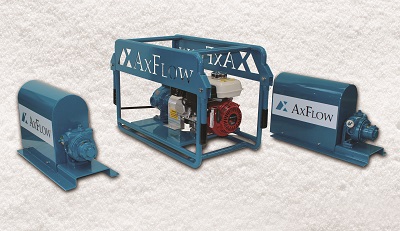Displaying items by tag: sliding vane pumps
Blackmer pumps survive the Antarctic winter

Three Blackmer sliding vane pumps used for the unloading and transfer of jet A1aviation fuel by the trans-Antarctic expedition – The Coldest Journey – have survived the freezing conditions of the polar winter.
Having embarked on the treacherous expedition in March, the ice train finally reached The Princess Elizabeth Research Station on the 7 November.
Led by Sir Ranulph Fiennes, the Coldest Journey was the first ever attempt to cross the Antarctic continent during the polar winter, travelling in darkness at temperatures down to below -70⁰C.
Departing from Novolazarevskaya (Novo) in March, the expedition experienced considerable difficulties from the outset and the length of the journey had to be substantial reduced.
However, the team went ahead with its valuable scientific tasks to provide unique data on glaciology, marine life, oceanography and meteorology.
Sponsored by pump distributor AxFlow Ltd, the three pumps maintained a regular fuel supply for the two Finning Caterpillar D6N track-type tractors used by the expedition to pull the two cabooses, which housed scientific research facilities, accommodation and storage, together with the 14 fuel pods containing 70,000 litres of Jet A1 aviation fuel.
The roles of the Blackmer XL1-5A and a Blackmer XB1C pumps were to unload the fuel from drums and transfer it each day to the vehicles. AxFlow selected these pumps because they are robust, are able to handle the low viscosity fuel at temperatures down to -90ºC and had been previously used in extreme cold-weather applications by NERC British Antarctic Survey.
The Blackmer sliding vane pump operates through the employment of a number of vanes that slide into or out of slots in the pump rotor when the pump is rotating. The vanes move outwards from the rotor and ride against the inner bore of the pump casing, forming pumping chambers in the process.
As the rotor revolves, the fluid enters the pumping chambers from the suction port. The fluid is circulated around the pump casing until it reaches the discharge port where it is forced out into the discharge piping. This type of design virtually eliminates any slippage, meaning that the pump’s high volumetric efficiency is maintained at all times.
Because the self-adjusting sliding vanes continuously adjust for wear, sliding vane pumps are able to maintain their near original efficiency and capacity throughout the life of the pump.
The pump speed does not need to be increased over time, making this type of pump highly energy efficient. These factors made the pumps ideal for the purposes and operating conditions encountered on the journey.
Fig. 1 Unloading the fuel from drums and transferring the fuel each day will be undertaken by Blackmer XL1-5A and a Blackmer XB1C pumps.
